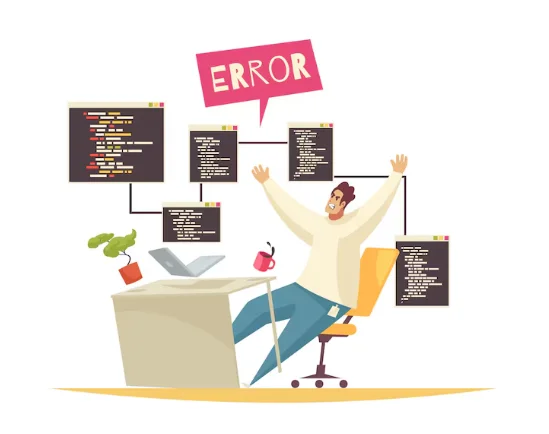Implementing an enterprise resource planning (ERP) solution like Dynamics 365 Finance and Operations is a significant milestone for any organization. However, despite its transformative potential, many businesses run into issues that delay go-lives, increase costs, or lead to underwhelming results.
Whether you’re working with internal teams or collaborating with Microsoft Dynamics implementation partners, being aware of the most common pitfalls—and proactively avoiding them—can ensure your ERP deployment meets its goals.
Here are five of the most common mistakes organizations make during a Dynamics 365 F&O implementation, and how to sidestep them.
1. Lack of clear business objectives and KPIs
One of the most fundamental yet overlooked steps is defining clear business goals. Companies often jump into implementation, focusing only on features or modules, without aligning the system’s capabilities to measurable outcomes.
Why it matters:
Without well-defined KPIs, measuring success, securing stakeholder buy-in, or evaluating ROI becomes difficult.
How to avoid it:
- Establish business goals (e.g., reduce order processing time by 30%)
- Align goals to specific D365 F&O functionalities
- Use KPIs to guide implementation priorities and track post-launch success
- Regularly review goals post-implementation and adjust KPIs based on evolving business needs
- Encourage department-level goal-setting to ensure all units benefit from system adoption
2. Underestimating data migration complexity
Data migration is one of the most technically challenging aspects of ERP implementation. Businesses often underestimate the time and resources needed to clean, validate, and map legacy data to new D365 structures.
Why it matters:
Poor data migration can lead to incorrect reporting, operational disruptions, and user mistrust in the system.
How to avoid it:
- Conduct a full audit of existing data early in the project
- Clean and standardize data before migration
- Perform test migrations to validate outcomes
- Work with experienced Microsoft Dynamics implementation partners who understand common data pitfalls in ERP deployments
- Ensure documentation and validation processes are in place to maintain data integrity
- Appoint data stewards to oversee data quality across departments
3. Neglecting change management and training
Deploying Dynamics 365 F&O involves technical changes and significant shifts in processes and responsibilities. Many businesses focus solely on system configuration, ignoring the need to prepare users.
Why it matters:
User resistance, lack of knowledge, and poor adoption can stall the ROI of even the best-configured system.
How to avoid it:
- Communicate benefits early and often
- Identify change champions in each department
- Create role-based training sessions before go-live
- Provide ongoing support during and after deployment
- Offer refresher training, FAQs, and self-help documentation to reinforce adoption
- Use surveys and feedback loops to fine-tune training strategies
- Celebrate milestones and recognize user adoption to encourage continued engagement
4. Skipping the partner selection process
Choosing the right implementation partner is critical. Yet, some companies treat partner selection as a formality, rather than a strategic decision.
Why it matters:
Not all partners have equal experience or industry knowledge. An ill-fitting partner can lead to misaligned expectations, slow progress, and costly rework.
How to avoid it:
- Vet Microsoft Dynamics implementation partners thoroughly
- Review client success stories and industry experience
- Ensure alignment on methodology, communication, and ongoing support
- Ask about certifications, managed services, and upgrade strategies
- Evaluate cultural fit, team dynamics, and partner commitment to long-term success
- Request proof of concept or pilot phases for larger implementations
5. Ignoring post-go-live planning
Many businesses treat go-live as the finish line. In reality, it marks the beginning of optimization. Without a plan for post-launch support, updates, and performance tuning, the system may stagnate or become misaligned with evolving needs.
Why it matters:
Neglecting post-go-live phases increases the risk of performance issues, low user satisfaction, and losing momentum.
How to avoid it:
- Allocate budget and resources for post-go-live support
- Set a schedule for regular reviews and user feedback
- Engage your implementation partner for managed services and updates
- Establish a roadmap for enhancements, integrations, and scaling the platform
- Monitor adoption metrics and continuously optimize processes using Dynamics 365 Finance and Operations
- Set clear ownership for system maintenance and feature adoption
Bonus tip: Failing to test thoroughly
Even the most well-planned implementation can fail without comprehensive testing. Due to time constraints, organizations often skip scenarios or perform only minimal testing.
Why it matters:
Lack of testing can break critical functionality in live environments, disrupting business continuity.
How to avoid it:
- Develop detailed test plans covering end-to-end scenarios
- Include functional, integration, performance, and user acceptance testing
- Engage end-users early for realistic feedback
- Use results to fine-tune system setup, security roles, and reports
- Leverage automated testing tools where applicable to reduce manual load
- Schedule regression testing around each Microsoft update release to maintain system stability
Final thoughts
Implementing Dynamics 365 Finance and Operations is a strategic investment that demands careful planning and execution. While pitfalls are common, they are also preventable with the right approach.
From setting clear business goals and managing data quality to choosing experienced Microsoft Dynamics implementation partners, success depends on getting the basics right and planning beyond the go-live date.
By anticipating these five mistakes—and the bonus sixth—you can build a resilient implementation strategy. Doing so will ensure a smoother rollout, drive user adoption, and unlock your organization’s full potential of Dynamics 365.
Additionally, organizations should foster a culture of continuous improvement. Conduct quarterly reviews to identify opportunities for enhancement, measure success against KPIs, and explore newly released features from Microsoft. The Dynamics 365 ecosystem evolves rapidly, and staying current is key to staying competitive.
Whether you are a growing SMB or a global enterprise, proactive planning, the right implementation partner, and robust post-launch strategies will determine the long-term impact of your ERP investment.


